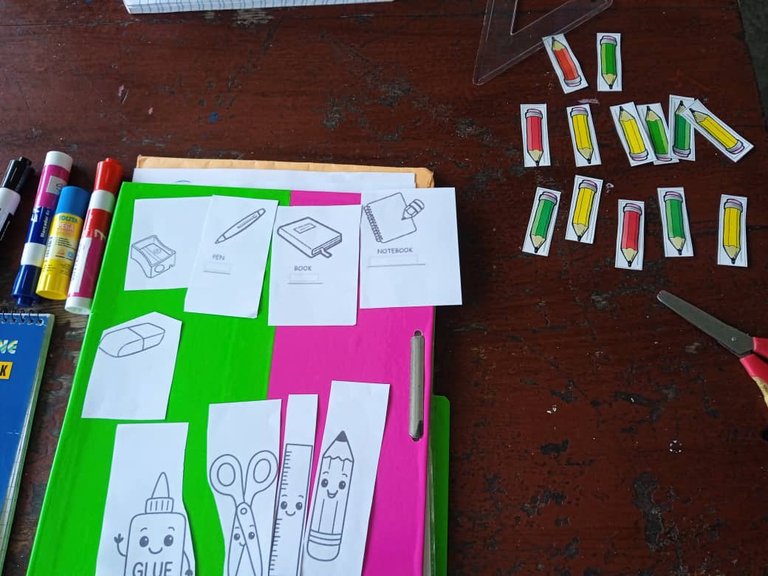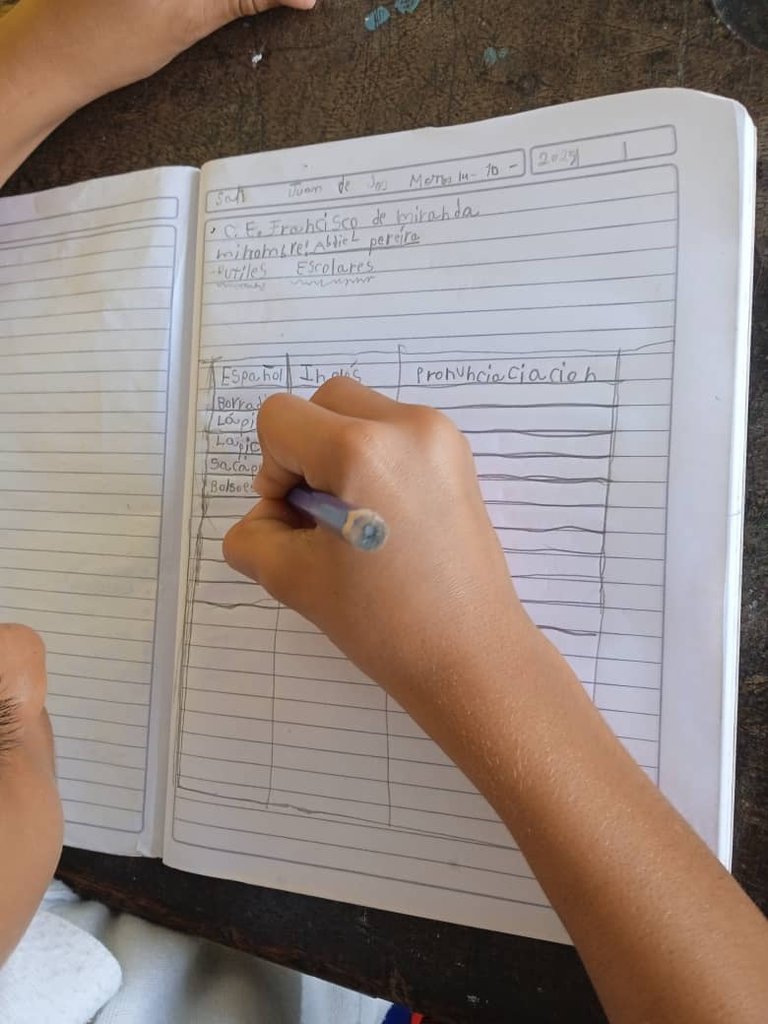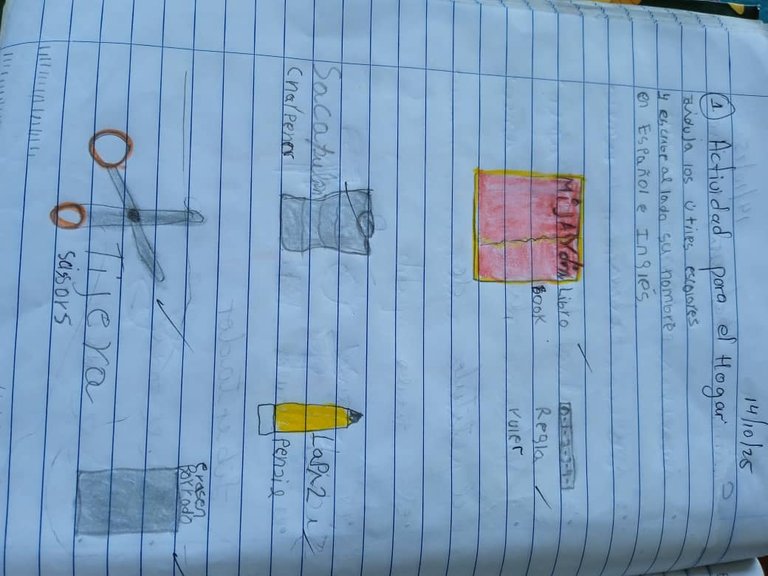
Como docentes integrales de aula, tenemos la hermosa y compleja misión de ser un poco de todo para nuestros estudiantes. Somos guías en matemáticas, exploradores en ciencias sociales, artistas en plástica y, cada vez con más fuerza, debemos ser también los primeros puentes hacia un idioma global; el inglés. Hoy quiero compartir una experiencia concreta de mi grupo de tercer grado, donde el aprendizaje por asociación fue nuestra brújula, especialmente para la pronunciación.
En la primera infancia, el cerebro está especialmente programado para los sonidos. Los niños no aprenden un idioma traduciendo; lo adquieren asociando sonidos con objetos, acciones y contextos. Esta es la clave.
Cuando introducimos el inglés de manera natural y lúdica, estamos aprovechando esta capacidad innata. No se trata de saturarles con reglas gramaticales, sino de permitirles sentir el idioma. La pronunciación, en particular, se beneficia enormemente. Un oído entrenado desde pequeño puede discriminar y reproducir sonidos que, para un adulto, resultan extremadamente difíciles. Estamos, literalmente, moldeando su aparato fonador y su oído para que el acento nativo no sea una meta inalcanzable, sino una consecuencia natural de su aprendizaje.
Mi Estrategia Didáctica en Acción: Útiles Escolares

Dentro de nuestro actual proyecto de aprendizaje, el área de inglés tenía un objetivo claro el cual es aprender a leer y escribir los nombres de los útiles escolares en español e inglés. El contenido, aunque aparentemente sencillo, fue la semilla para una clase llena de descubrimientos. Nuestra estrategia se desarrolló en tres fases claras, siempre con la asociación como hilo conductor.
Inicio y Desarrollo: La Construcción del Cuadro de Asociación

La primera parte de la actividad consistió en elaborar un cuadro de tres columnas: Español, Inglés y Pronunciación
Confieso que este proceso fue un reto mayor del que anticipé. Para muchos, era la primera vez que estructuraban información de esta forma. Fue una lección de paciencia y guía constante.
Trabajamos paso a paso. Empezamos con la palabra en español:
- Lápiz. Luego, la escribimos en inglés, Pencil. El momento mágico llegaba en la tercera columna. con una pronunciación sencilla.
- Pencil, escribimos Pén-sil. Les pedí que repitieran el sonido, desglosándolo; Pénnnn-sil.
- Hicimos lo mismo con, Eraser ; I-réi-ser; Scissors, Sí-sors y asi sucesivamente.
Fue un ejercicio constante de deletrear palabras y reforzar sonidos, celebrando cada intento. Ver sus caras de concentración y luego de triunfo cuando lograban la pronunciación fue increíble. ¡Al final, lo lograron!
La Fase de la Pronunciación Lúdica

Con nuestro cuadro completo, pasamos a la práctica oral a través del juego. Señalaba un dibujo en el pizarrón y decían la palabra en español e inglés. La repetición en un contexto de juego hace que los sonidos empezaran a fijarse en su memoria sin esfuerzo.
Cierre y Consolidación: Dibujar y Escribir

Para cerrar el ciclo de aprendizaje, fue una actividad simple para ellos, ya que les encanta dibujar y lo hacen muy bien. Cada estudiante debía dibujar en su cuaderno los útiles escolares que más le gustaran de nuestra lista y escribir su nombre en español e inglés. Esta actividad reforzó la asociación visual (el dibujo), la grafía (la escritura) y, al hacerlo de manera individual, les dio un sentido de propiedad sobre el nuevo vocabulario.
Su Curiosidad se despertó
El verdadero indicador del éxito de una clase no está en la planificación, sino en la reacción de los estudiantes. Y hoy, el contenido fue de mucho interés para ellos. La barrera del esto es inglés se disipó y empezaron a ver el idioma como una herramienta útil y divertida.
Lo más gratificante fue escuchar sus preguntas espontáneas como:
- Maestra, ¿Cómo digo préstame tu Sacapuntas?, Este es mi lápiz, Mi bolso es azul.
Sus mentes ya estaban haciendo la transición natural de palabras sueltas a oraciones cortas y significativas. Fue una señal clara de que el aprendizaje había trascendido la tarea y se había convertido en un deseo genuino de comunicación.
Aunque el contenido requerido para este proyecto de aprendizaje se centraba en el vocabulario, no me pude resistir a la chispa de su entusiasmo. Quedamos en que nuestra próxima clase estaría dedicada a construir esas frases cortas que desean aprender.
Gracias por leerme hasta el final.
Imágenes de mi propiedad, tomadas con mi Redmi 10A. Video editado en canvas

English version
As comprehensive classroom teachers, we have the beautiful and complex mission of being a little bit of everything for our students. We are guides in math, explorers in social studies, artists in the visual arts, and, increasingly, we must also be the first bridges to a global language: English. Today I want to share a specific experience from my third-grade class, where learning by association was our compass, especially for pronunciation.
In early childhood, the brain is specially wired for sounds. Children don't learn a language by translating; they acquire it by associating sounds with objects, actions, and contexts. This is the key.
When we introduce English in a natural and playful way, we are taking advantage of this innate ability. It's not about overwhelming them with grammatical rules, but rather allowing them to experience the language. Pronunciation, in particular, benefits enormously. An ear trained from a young age can discriminate and reproduce sounds that, for an adult, are extremely difficult. We are literally molding their speech and hearing so that a native accent isn't an unattainable goal, but a natural consequence of their learning.
My Teaching Strategy in Action: School Supplies

Within our current learning project, the English area had a clear objective: to learn to read and write the names of school supplies in Spanish and English. The content, although seemingly simple, was the seed for a class full of discoveries. Our strategy was developed in three clear phases, always with association as the guiding thread.
Initiation and Development: Building the Association Chart
The first part of the activity consisted of creating a three-column chart: Spanish, English, and Pronunciation.
I confess that this process was more challenging than I anticipated. For many, it was the first time they had structured information in this way. It was a lesson in patience and constant guidance.
We worked step by step. We started with the Spanish word:
- Lápiz. Then, we wrote it in English, Pencil. The magic moment came in the third column, with a simple pronunciation.
- Pencil, we wrote Pén-sil. I asked them to repeat the sound, breaking it down: Pénnnn-sil.
- We did the same with Eraser; I-réi-ser; Scissors; Sí-sors, and so on.
It was a constant exercise of spelling words and reinforcing sounds, celebrating each attempt. Seeing their expressions of concentration and then triumph when they got the pronunciation right was incredible. In the end, they did it!
The Playful Pronunciation Phase

With our picture complete, we moved on to oral practice through play. I pointed to a picture on the board and they said the word in Spanish and English. Repetition in a playful context helped the sounds begin to stick in their memory effortlessly.
Closure and Consolidation: Drawing and Writing

To close the learning cycle, it was a simple activity for them, since they love to draw and are very good at it. Each student had to draw in their notebook the school supplies they liked most from our list and write their names in Spanish and English. This activity reinforced the visual association (drawing) and the spelling (writing), and, by doing it individually, gave them a sense of ownership over the new vocabulary.
Their Curiosity Awakened
The true indicator of a lesson's success is not in the planning, but in the students' reaction. And today, the content was of great interest to them. The "this is English" barrier dissipated, and they began to see the language as a useful and fun tool.
The most rewarding thing was hearing their spontaneous questions like:
- Teacher, how do I say lend me your pencil sharpener?, This is my pencil, My bag is blue.
Their minds were already making the natural transition from single words to short, meaningful sentences. It was a clear sign that their learning had transcended the task and become a genuine desire to communicate.
Although the content required for this learning project focused on vocabulary, I couldn't resist the spark of their enthusiasm. We agreed that our next class would be dedicated to constructing those short sentences they longed to learn.
Thank you for reading until the end.
Images my own, taken with my Redmi 10A. Video edited on Canvas
▶️ 3Speak
~~~ embed:ClassicalEducation/comments/1o9t74q/semillero_bilingüe_cultivando_el_inglés_desde_el/ reddit metadata:fENsYXNzaWNhbEVkdWNhdGlvbnxodHRwczovL3d3dy5yZWRkaXQuY29tL3IvQ2xhc3NpY2FsRWR1Y2F0aW9uL2NvbW1lbnRzLzFvOXQ3NHEvc2VtaWxsZXJvX2JpbGluZ8O8ZV9jdWx0aXZhbmRvX2VsX2luZ2zDqXNfZGVzZGVfZWwvfA== ~~~
This post has been shared on Reddit through the HivePosh initiative.